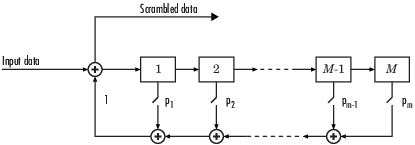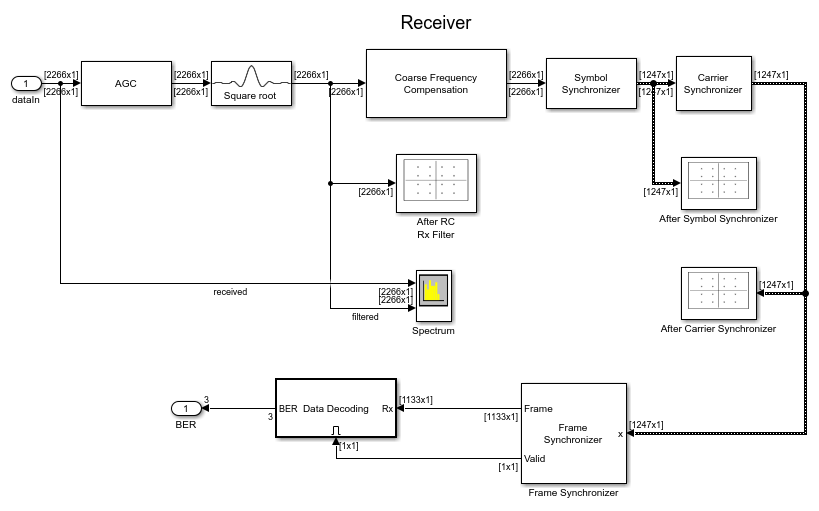Scrambler
Scramble input signal
Libraries:
Communications Toolbox /
Sequence Operations
Description
The Scrambler block applies multiplicative scrambling to input data.
One purpose of scrambling is to reduce the length of consecutive 0s or 1s in a
transmitted signal. Long sequences of 0s or 1s can cause transmission synchronization
problems. This schematic shows the scrambler operation. All adders perform addition
modulo N, where N is the value specified by the
Calculation base
parameter.

At each time step, the input causes the contents of the registers to shift
sequentially. Using the Scramble polynomial
parameter, you specify the on or off state for each switch in the scrambler.
To achieve repeatable initial scrambler conditions, you can use one of these optional input ports:
Select the
Reset on nonzero input via portparameter and reset the scrambler withRst.Set the
Initial states sourceparameter toInput portand provide the initial states withISt.
This block can accept input sequences that vary in length during simulation. For more information about sequences that vary in length, see Variable-Size Signal Basics (Simulink).
Note
To apply additive scrambling to input data, you can use the PN Sequence Generator block and the Logical Operator (Simulink) block configured as an XOR logical operator. For an example, see Additive Scrambling of Input Data in Simulink.
Examples
Extended Examples
Ports
Input
Output
Parameters
Block Characteristics
Data Types |
|
Multidimensional Signals |
|
Variable-Size Signals |
|
Extended Capabilities
Version History
Introduced before R2006a

